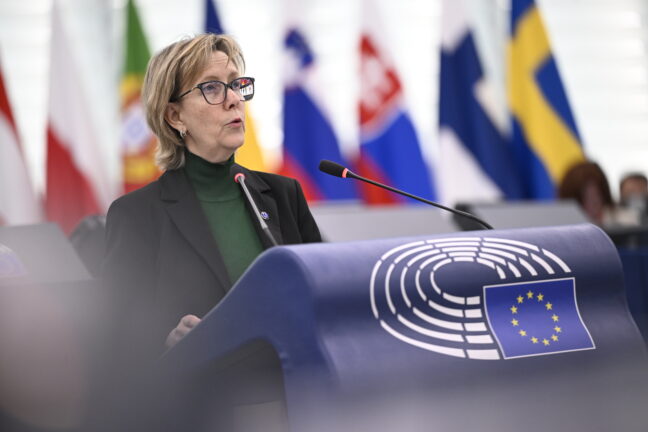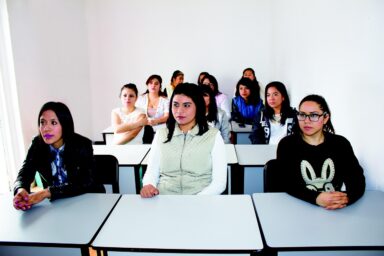The EU is pursuing a European savings and investment union. The goal is to channel EU citizens’ savings—a notable €34 trillion in 2023—into the European economy. The German think-tank Centrum für Europäische Politik sums up ideas on using the pension systems to achieve the mammoth task.
Commissioner Maria Luís Albuquerque has been tasked with the development of the Savings and Investment Union (SIU). This is a tall order. Approximately 34% of these savings are held in low-interest accounts, signalling a need for capital mobilisation. The Commission prioritises the second and third pillars of old-age provision—occupational and private pension schemes—as central to this SIU. The aim is to both secure retirement prospects and stimulate economic growth.
However, the European Court of Auditors has observed that the Commission’s goal of a single market for occupational retirement provision remains elusive. It also noted that pan-European private pension products (PEPPs) have failed to gain traction. The Berlin-based Centrum für Europäische Politik (CEP) analyses the debate on promoting the second and third pillars. It outlines the relevance of strengthening occupational and private pension schemes and presents various reform proposals.
The case for supplementary schemes
The European Central Bank (ECB) estimates that “€350bn in capital alone could be mobilised annually for long-term market-based investments if private households in the EU were to adopt a similar savings behaviour – deposits to other financial assets ratio – to private households in the US.” EU households have roughly €34tn in savings, with a savings rate of 12.7 per cent.
However, 34% of household savings are in low-yield accounts, versus 13.4% in the US. Also, EU households hold only 17 per cent of their financial assets as securities, while the US rate is around 43 per cent. This “ineffective savings behaviour” limits investment opportunities and the capital available for Europe’s transformational challenges.
You might be interested
In 2022, pension funds in the EU amounted to 32 per cent of EU GDP. This contrasts with 142% and 100% in the US and the UK, respectively. Funds are concentrated in the Netherlands, Denmark, and Sweden—62 per cent of the EU total. These nations have well-developed schemes, covering over 90 per cent of employees. In contrast, just 20% of EU citizens have occupational provision and 18% have private provision.
First pillar crumbling
This limited development is problematic, as first-pillar benefits are projected to decline. The EU Commission projects that “the average pension paid out in the EU in 2070 will be just 35.5 per cent of the average gross salary,” a decline of 8.3 percentage points from 2022. The dominance of the first pillar also limits capital flow into financial markets. Countries with strong supplementary schemes tend to have higher market capitalisation and household capital market participation.
Demographic shifts will place pressure on pension systems. The old-age dependency ratio is projected to reach 59% by 2070, up from 36% in 2022. By 2045, the Commission expects fewer than twenty working-age individuals for every ten people over 65. Furthermore, the expected years of life after leaving the labour market has increased.
Strengthening the second and third pillars is crucial for intergenerational burden sharing, risk diversification, and fiscal stability. State pension schemes face challenges tied to demographics and productivity. Lower birth rates and minimal productivity growth affect yields. Increasing contribution rates can harm labour supply and investment. Funded schemes, linked to capital market performance, can help distribute the burden more evenly. Investing globally enables broad risk diversification. Also, supplementary schemes can ease the burden on public budgets.
Ideas for reform
A working group led by Christian Noyer, an ex-governor of the Bank of France, advocates a “decentralised approach” based on an EU label for national savings products. The group emphasises long-term investment horizons, the absence of capital guarantees, automatic enrolment with opt-out clauses, attractive tax regimes, and the channelling of investments into European assets.
Mr Noyer’s working group favours this approach because “a large number of different national products already exist”. Other reasons include “the individual features of national frameworks, and the failure of the pan-European private pension product (PEPP).”

Italy’s ex-PM Enrico Letta supports creating an ‘EU Long-Term Savings Product’ by 2025, with auto-enrolment and an opt-out clause, for both collective and individual schemes. Mr Letta also advocates for simplifying and upgrading the PEPP, also with auto-enrolment. He believes that there is room at EU level for both collective (company) and individual (private) long-term savings products.
The specific risks of defined contribution schemes should be taken into account more comprehensively. — the European Court of Auditors
Mario Draghi, meanwhile, calls for expanding second-pillar pension schemes. He draws inspiration from successful models in some EU member states. The former head of the ECB (and another ex-PM of Italy) advocates for transparent “pension dashboards” to let citizens track their asset accumulation and future pension levels. He also proposes tax-exempt pension contributions.
Pan-European pension? Not really
The European Insurance and Occupational Pensions Authority (EIOPA) proposes further developing the PEPP. It aims to transform it into a combined second and third-pillar product. Other measures include more flexibility on cost caps, national PEPPs that meet EU standards and receive the “PEPP label”, and the option to transfer existing pension contributions into a PEPP.
EIOPA also proposes automatic enrolment and pension tracking systems. EIOPA is focusing primarily on further development of the PEPP, “whereby its weaknesses are to be eliminated and its advantages strengthened”.
We are considering EU-level guidelines regarding the overarching framework and main features of products with other aspects remaining under the control of national governments. — The European Central Bank
The European Court of Auditors calls for strengthening the supervisory framework for IORPs, improving supervisory convergence, assessing systemic risks, increasing transparency on costs and returns, and enhancing pension tracking systems and dashboards. In particular, the Court stresses that “the specific risks of defined contribution schemes should be taken into account more comprehensively.” It also argues in favour of “additional safeguards to avoid conflicts of interest.”
A mixed bag
ECB authors propose transparent fees, freedom of choice in investment options, minimum holding periods, easy portability, broad accessibility, automatic enrolment, consumer protection, a label for compatible products, and defined investment targets. They advocate for an approach where the EU sets the overarching framework, but member states retain control over national aspects. They “are considering EU-level guidelines regarding the overarching framework and main features of products with other aspects remaining under the control of national governments.”
The Eurogroup emphasises better opportunities for wealth accumulation. It focuses on longer-term savings and investment products. Also, it calls for further developing and improving the PEPP and assessing the availability of occupational pension products. Further down the road, it supports developing pension tracking systems and establishing a pension dashboard. “Longer-term savings and investment products will also play a central role. The Eurogroup also explicitly refers to occupational and private pension schemes.”
The introduction of the pan-European private pension product (PEPP) has not so far been a success and that it has not been widely accepted. — The European Commission
The European Council calls for improved EU-wide savings and pension products by 2026. It is also pushing for improvements to the PEPP product. Seven Member States have launched the “Finance Europe” label. This label is intended to identify savings and pension products that primarily channel financial resources into the European economy. “Thus, at least 70% of the invested funds must flow into European assets and thereby help to finance the EU’s strategic goals – e.g. strategic autonomy, economic security, digital and sustainable transformation.”
Overhaul in the offing
The EU Commission intends to present recommendations on best practices, automatic enrolment, and pension dashboards. It will also offer proposals to amend the IORPs Directive and the PEPP Regulation. The Commission openly admits that “the introduction of the pan-European private pension product (PEPP) has not so far been a success and that it has not been widely accepted.”
Due to numerous deficits, adjustments are being considered. The Commission also sees room for improving the IORPs Directive. It will consider “extending the scope of the IORPs Directive” and “relaxing investment rules”.
The EU Commission’s renewed focus on strengthening private and occupational pension schemes is crucial, CEP points out. The demographic challenge, the pressure on pay-as-you-go systems, and the need for productive investment necessitate strengthening these two pillars. The various reform proposals offer a foundation for discussion. Commissioner Albuquerque has her work cut out.











